
Time can erase physical remnants of the past, but their impact can persist. The seven ancient wonders once held the world in awe, marveling thinkers and builders for generations. Largely no longer present, these wonders linger in the structures they have inspired today.
Great Pyramid of Giza
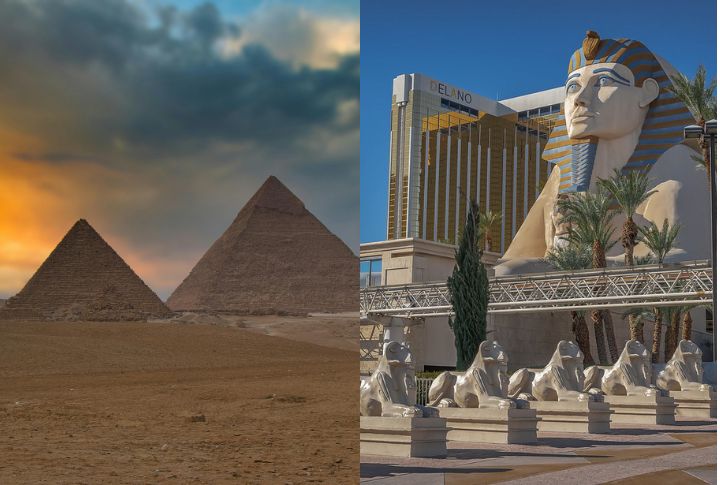
Standing through time, the Great Pyramid of Giza, built around 2560–2540 BC, is an enduring example of ancient Egyptian engineering. Composed of over 2.3 million stone blocks, it is the biggest of the Wonders of the ancient world and the only one that is intact to a large degree today.
Luxor, Las Vegas
The Luxor Hotel in Vegas is a modern structure inspired by the ancient Pyramid of Giza. While smaller than the original, its pyramid shape and Egyptian-themed interior design pay homage to the ancient wonder.
Hanging Gardens of Babylon
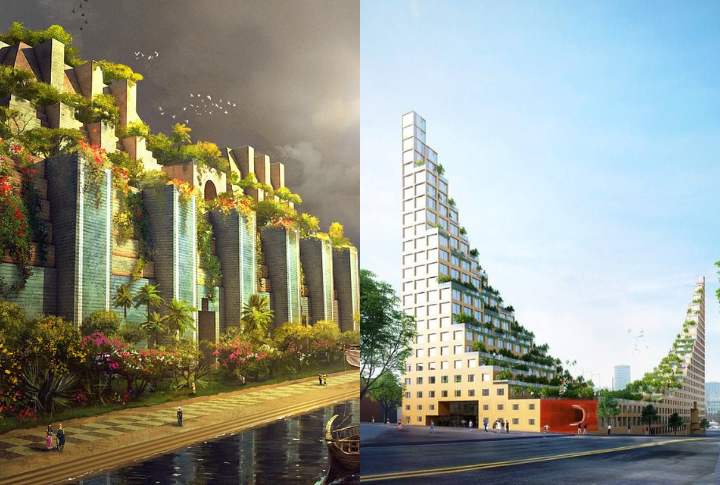
Often shrouded in mystery, the Hanging Gardens of Babylon were renowned for their advanced landscaping and irrigation techniques. Built around 600 BC, King Nebuchadnezzar II created this legendary wonder for a homesick queen, although their exact location and appearance remain debated.
Garden Hill, Birmingham
The proposed “Garden Hill” development in Birmingham’s Digbeth area draws inspiration from the Hanging Gardens of Babylon concept. Designed by London-based Architects of Invention, the project features two 25-storey towers with integrated gardens to create a green space within an urban environment.
Temple of Artemis at Ephesus
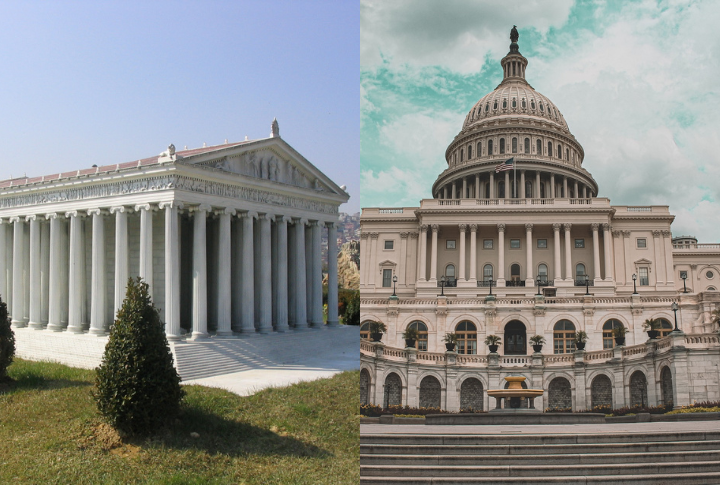
The Temple of Ephesus was dedicated to the Greek goddess Artemis and was a significant example of Ionian architecture. It was located in Ephesus (in present-day Turkey). It was one of the largest temples of its time and underwent multiple reconstructions throughout its history.
The United States Capitol building
The United States Capitol building incorporates classical architectural elements similar to those found in ancient structures like the Temple of Artemis. Both buildings showcase classical styles with balanced shapes and rows of columns. Its design elements reflect the enduring influence of classical architecture on important civic buildings.
Statue of Zeus at Olympia
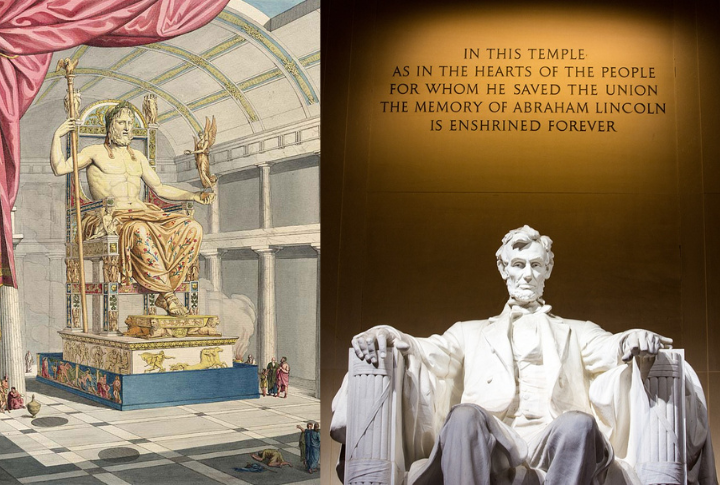
Crafted by the renowned sculptor Phidias, the Statue of Zeus at Olympia greatly represented the Greek god Zeus. Approximately 40 feet tall, it depicted Zeus seated on a throne adorned with,ivory, gold and precious stones. Its size and craftsmanship captivated visitors from across the Mediterranean.
Lincoln Memorial, Washington, D.C.
The grandeur and symbolism of the Statue of Zeus could have easily inspired the Lincoln Memorial in Washington. The Lincoln Memorial’s design, with its imposing statue of Abraham Lincoln, evokes a reverence similar to that of the ancient Zeus statue.
Mausoleum at Halicarnassus
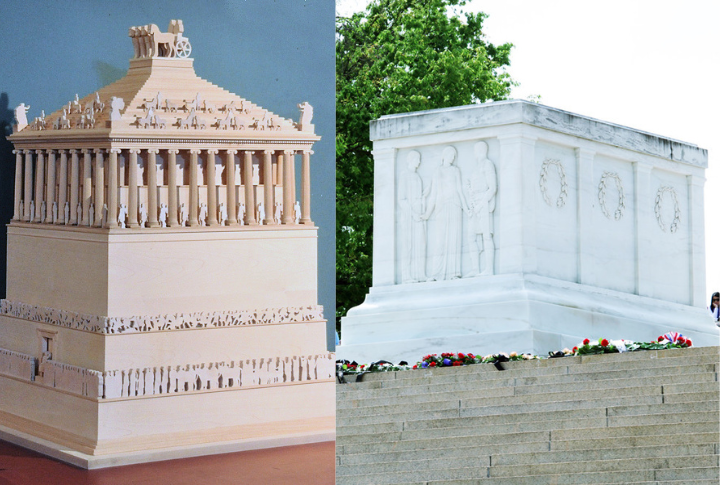
The Mausoleum at Halicarnassus was a tomb built for Mausolus, a Persian satrap. This monumental structure stood approximately 45 meters tall and was adorned with intricate sculptures and reliefs by renowned Greek artists. It combined elements of Greek and Persian design.
The Tomb of the Unknown Soldier, Arlington
Sharing several design elements and thematic similarities with the Mausoleum at Halicarnassus, the Tomb of the Unknown Soldier honors fallen soldiers in a contemporary context. Both structures honor the deceased and feature a central white marble sarcophagus. However, they differ significantly in scale and overall design.
Colossus of Rhodes
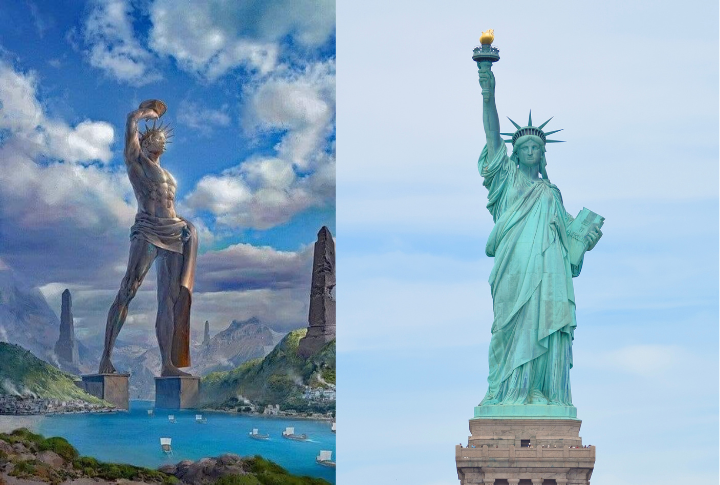
Located at the harbor entrance of Rhodes, the Colossus of Rhodes structure was built to commemorate Rhodes’ victory over Cyprus. This structure was erected around 280 BCE and was a large statue of the sun god Helios. Standing approximately 33 meters tall at the harbor entrance, an earthquake eventually toppled it.
Statue of Liberty, New York City
Completed in 1886, the Statue of Liberty shares several thematic and visual elements with the Colossus of Rhodes. Standing 46 meters tall, the Statue of Liberty features a similar pose, with an outstretched arm holding a torch, just like the Colossus of Rhodes. Both statues serve as iconic symbols.
Lighthouse of Alexandria
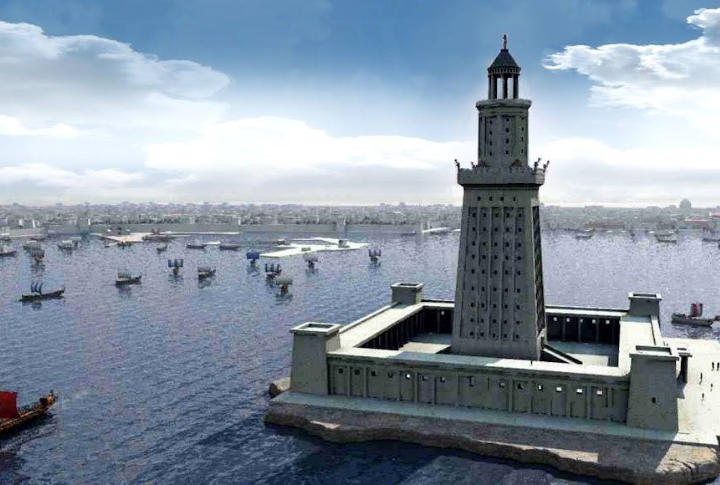
Known as the Pharos, the Lighthouse of Alexandria was a towering structure designed to guide ships safely into the harbor. Built around 280-247 BCE, it stood at an estimated height of 100-120 meters on the island of Pharos in Alexandria, Egypt, making it one of the tallest structures of its time.
Alexandria Lighthouse Project, Alexandria, Egypt
Inspired by the ancient Lighthouse of Alexandria, the Alexandria Lighthouse Project is an ambitious endeavor to reconstruct the wonder for the modern world. By incorporating sustainable technologies and materials, the design seeks to create a structure that is both environmentally responsible and respectful of its historical context.

